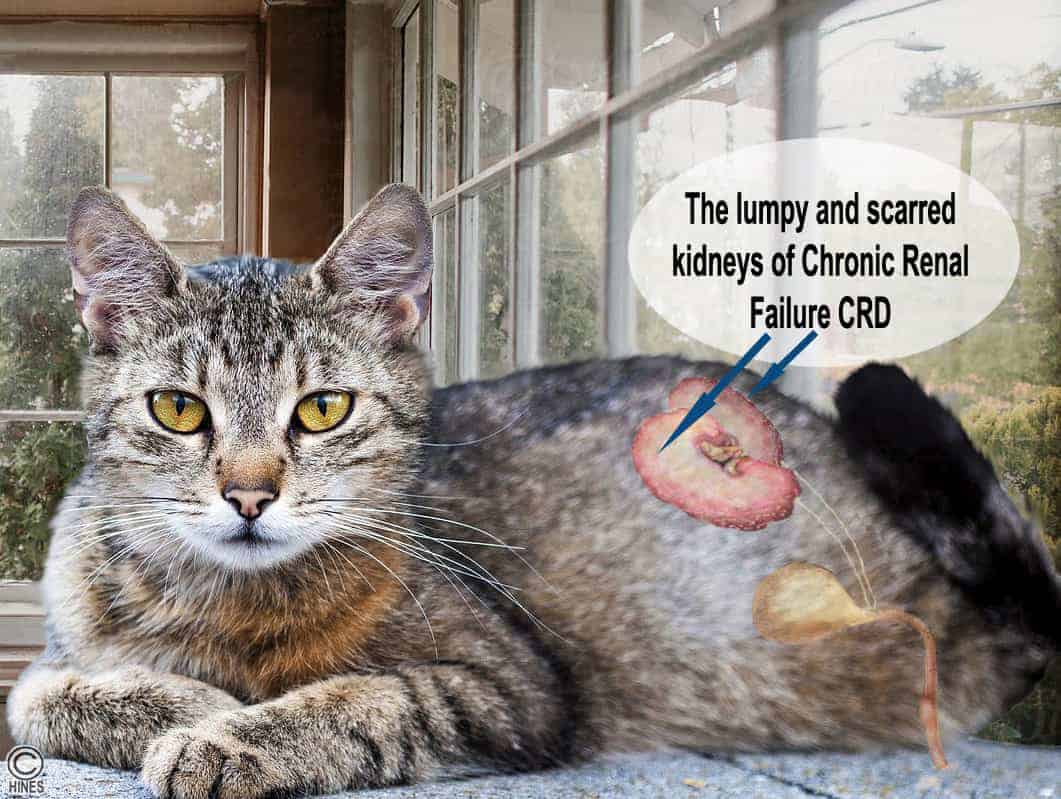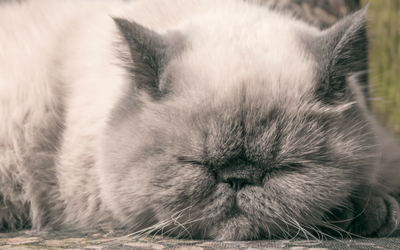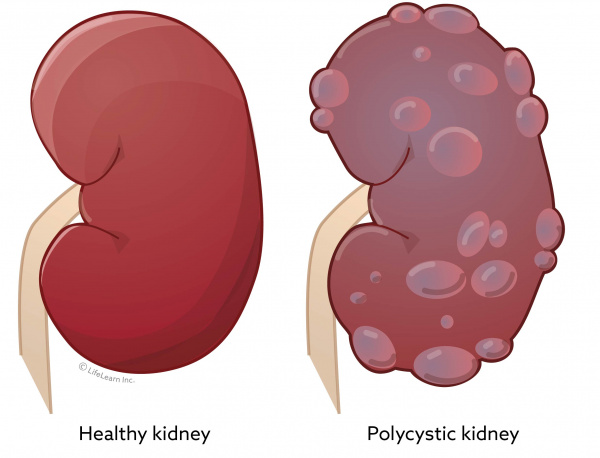end stage polycystic kidney disease in cats
Refusal to eat. Ad Kidney Disease Cat Food Low Prices Free Shipping 247 Expert Help Shop Now.

Polycystic Kidney Disease Cat S Life Expectancy Poc
Reduced or no urination.

. The main feature of PKD is that it produces cysts filled with fluid in the kidneyThese cysts are present at birth but as the kitten grows the cysts also increase in size and may become able to damage the kidney and. Autosomal dominant polycystic kidney disease ADPKD and autosomal recessive polycystic kidney disease ARPKD are cilia-related disorders and the two main forms of monogenic cystic kidney diseases. Making Sure Your Cat Gets Help When They Need It.
Visit us online today. Most cats do not exhibit any symptoms during initial stages of cyst formation and growth. Signs of Feline PKD.
How Your Cat Feels in End Stage Kidney Failure. Article in Dutch Authors Ed J Gubbels Peter Prins. Occurring most frequently in Persian cats polycystic kidney disease is an inherited disorder in which small closed liquid-filled sacs develop in the tissue of the feline kidney.
These symptoms include vomiting weakness depression weight. Your vet will note that your cats urine is not being concentrated which is a clear sign that the kidneys are failing. Polycystic Kidney Diseases epidemiology.
When the neurons are narrowed or blocked by the buildup of waste products the kidneys cannot produce enough urine causing the cat to pee heavily. The common name is autosomal dominant polycystic kidney disease ADPKD and causes a progressive development of fluid-filled cysts in the kidney and sometimes in other organs as the liver and pancreas. Low Prices Fast Free Shipping.
Symptoms Increased thirst Increased urination Nausea Vomiting Decreased appetite Weight loss Lethargy Blood in the urine High blood pressure. Cats experience many of the above symptoms throughout each progressive stage of kidney failure. However this gene cannot mutate in all cats.
Polycystic kidney disease or PKD is an inherited condition in cats that causes multiple cysts pockets of fluid to form in the kidneys. Symptoms of End Stage Kidney Failure in Cats. Polycystic kidney disease PKD or polycystic kidney syndrome is a hereditary disease that is especially common in Persian and Exotic Shorthair cats.
Many clinical cases have been recognized in Japan but the mutation rate in cats has not been. Ad How To Know If Your Cats Sick By Looking For Clues In The Litter Box. What are the symptoms of end-stage kidney failure in cats.
Polycystic Kidney Disease PKD in cats Polycystic Kidney Disease PKD in cats Polycystic Kidney Disease PKD in cats Tijdschr Diergeneeskd. Low potassium levels high phosphorus levels and very high urea and creatinine levels. It is not painful unless the cysts grow rapidly and rupture at end-stage PKD.
Polycystic kidney disease is an inheritable condition that results in the formation of multiple cysts throughout the kidneys. PKD has many parallels to autosomal dominant polycystic kidney disease a common congenital kidney disorder in humans. When the disease is bilateral ie.
Genetically speaking it is a point mutation in exon 29 of a specific gene called PKD1 that is inherited as autosomal dominant trait. As cats get closer to death the symptoms become much more severe. Your cat will likely be started on the kidney diet mentioned above.
These cysts are present from birth. Once the disease has progressed bosselated. Cystic kidneys are common causes of end-stage renal disease both in children and in adults.
Affecting both kidneys it causes polyuria polydipsia increased thirst anorexia weight loss lethargy and other signs of chronic renal failure. A type of cat kidney disease called ecliptic nephrosis or EPN is most common in older cats. They will also be in significant pain from ulceration of the mouth and stomach lining and toxin build-up leading.
In the latter stages of kidney disease in cats the animal will start to feel very unwell feeling constantly sick dehydrated and weak. Polycystic kidney disease is an inheritable condition that results in the formation of multiple cysts throughout the kidneys. This disease is reported to be the most common inherited disorder in feline medicine.
More often renal failure sets in between. Feline polycystic kidney disease PKD an inherited autosomal dominant disease has been reported to occur mostly in Persian or Persian related cats and to be associated with a mutation from C to A at position 10063 in exon 29 of the feline PKD1 gene PKD1 mutation. Our goal is to alleviate these symptoms and manage kidney disease progression to improve and extend quality of life for.
Were here to help your pets live healthier for longer naturally. The cats liver is normal in size but contains dilating cystic bile ducts. Although the cysts can be found as early as 6 weeks of age the rate at which the disease progresses varies dramatically from cat to cat.
Ad Supplement your cats kidney care with all-natural vet-formulated remedies from NHV. Cats who have advanced to or are diagnosed with Stage 4 Chronic Kidney Disease typically show significant symptoms including nausea vomiting weight loss decreased appetite. It involves swelling of the kidneys and a blockage in the urinary tract.
These sacs cysts tend to multiply in number and grow in size over time eventually overwhelming normal kidney tissue and often leading to potentially fatal kidney failure. Polycystic kidney disease may be difficult to detect in the initial stages. ADPKD is a common disease that mostly presents in.
Call or Chat 247 for Expert Pet Support. Polycystic kidney disease PKD is a disease that affects felines and other mammals such as humans. Symptoms of end stage kidney failure in cats include dull sunken eyes inability to walk body odour incontinence in bladder or bowels refusal to eat or drink seizures confusion pacing and restlessness withdrawing hiding and running away.
Genetically speaking it is a point mutation in exon 29 of a specific gene called PKD1 that is inherited as autosomal dominant trait. Cats experiencing end-stage kidney failure are most likely to display severe symptoms. The symptoms of end-stage kidney failure reflect the kidneys inability to compensate for significant damage and loss of function.
The cysts often remain undetected until they become large and numerous enough to contribute to kidney failure or an enlarged abdomen. Severely affected kittens may die before 1 year of age. Posted on December 15 2020 December 15 2020 by Dr.
Among the most common symptoms are loss of appetite and recurring nausea. Once kidney disease advances to stage four the disease has caused. Initially they are very small but they grow larger over time and may eventually disrupt kidney function resulting in.
Stage 2 kidney disease in cats will show creatinine levels above 22. Stage 2 renal failure treatment includes everything in stage 1 plus a potassium supplement. If left untreated or if it progresses significantly chronic kidney disease will lead to stage four or end-stage kidney failure which is fatal.

Amazing And Unique Tricks Large Kidney Stones Kidney Detox Young Living Healthy Kidney Crock P Kidney Disease Chronic Kidney Disease Polycystic Kidney Disease

Navigating Kidney Failure In Cats Final Stages Cat Kidney Kidney Failure Cat Renal Failure

Kidney Disease In Your Cat Ron Hines Vetspace 2nd Chance The Animal Health Website

Kidney Disease Polycystic Kidney Disease In Cats Vca Animal Hospitals

Kidney Disease Awareness Heart Chronic Kidney Disease Polycystic Kidney Disease Kidney Disease Diet

Kidney Disease Polycystic Kidney Disease In Cats Vca Animal Hospitals

Chronic Kidney Disease In Pets Teva Veterinary Clinic

Account Suspended Kidney Disease Kidney Disease Symptoms Chronic Kidney Disease

Kidney Stones Syrup Kidney Disease Awareness Polycystic Kidney Disease Kidney Infection

Kidney Disease Quotes Signs Kidney Disease Diet Kidney Disease Kidney Disease Awareness

What Are The Symptoms Of A Cat With Kidney Failure Renal Kidney Failure In Cats

Pin On Kidney Disease Benefits Of

Kidney Disease Recipes People Kidney Disease Stages Kidney Disease Diet Kidney Disease Symptoms





